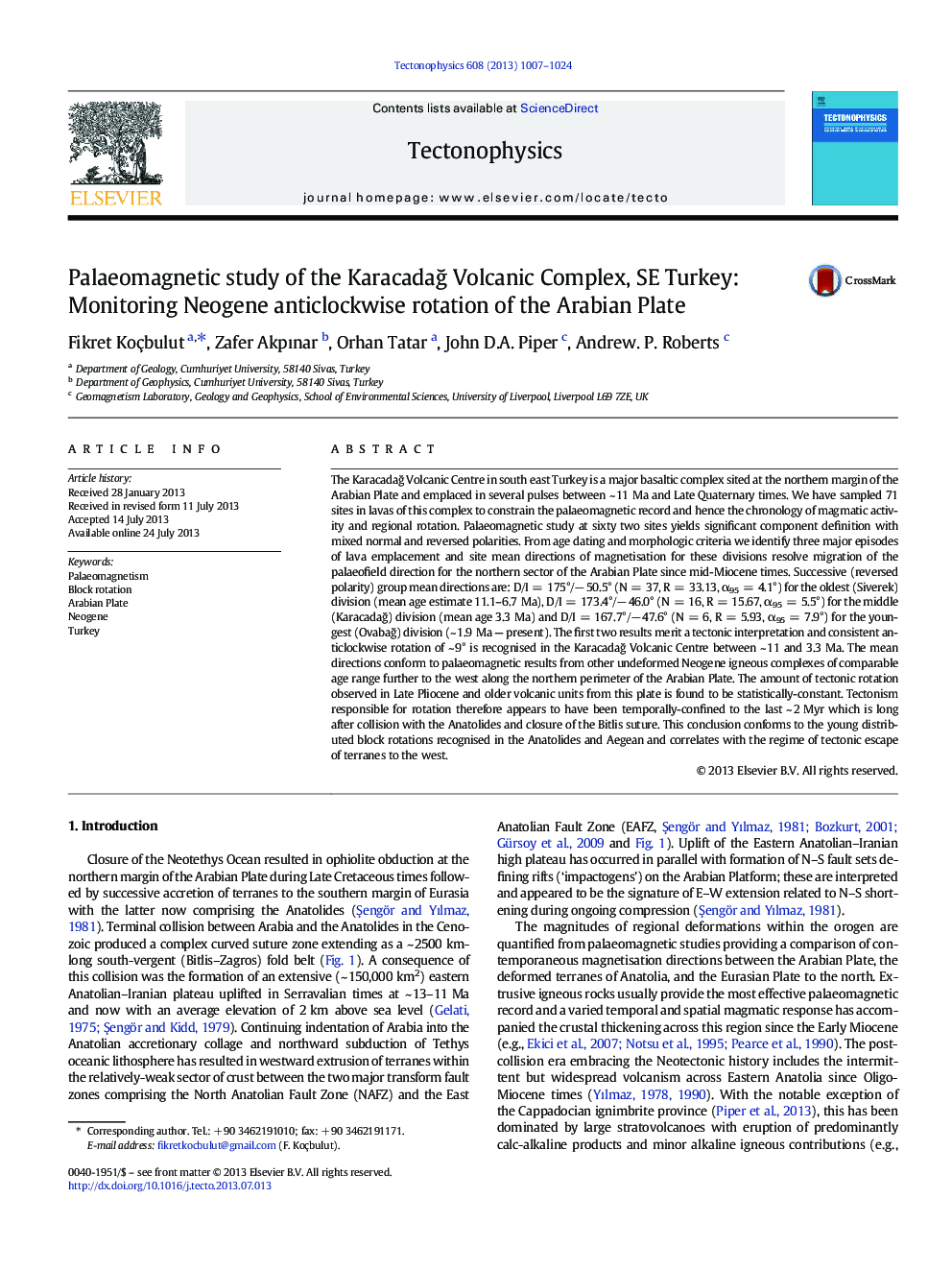| کد مقاله | کد نشریه | سال انتشار | مقاله انگلیسی | نسخه تمام متن |
|---|---|---|---|---|
| 6434031 | 1636779 | 2013 | 18 صفحه PDF | دانلود رایگان |

- Comparable palaeomagnetic results from the Arabian foreland
- Consistent anticlockwise rotation of the Arabian Plate after ~Â 11Â Ma in SE Turkey
- Impactogen rifting and volcanic activity on the Arabian foreland of SE Turkey
- Regional Neogene distributed crustal deformation.
The KaracadaÄ Volcanic Centre in south east Turkey is a major basaltic complex sited at the northern margin of the Arabian Plate and emplaced in several pulses between ~ 11 Ma and Late Quaternary times. We have sampled 71 sites in lavas of this complex to constrain the palaeomagnetic record and hence the chronology of magmatic activity and regional rotation. Palaeomagnetic study at sixty two sites yields significant component definition with mixed normal and reversed polarities. From age dating and morphologic criteria we identify three major episodes of lava emplacement and site mean directions of magnetisation for these divisions resolve migration of the palaeofield direction for the northern sector of the Arabian Plate since mid-Miocene times. Successive (reversed polarity) group mean directions are: D/I = 175°/â 50.5° (N = 37, R = 33.13, α95 = 4.1°) for the oldest (Siverek) division (mean age estimate 11.1-6.7 Ma), D/I = 173.4°/â 46.0° (N = 16, R = 15.67, α95 = 5.5°) for the middle (KaracadaÄ) division (mean age 3.3 Ma) and D/I = 167.7°/â 47.6° (N = 6, R = 5.93, α95 = 7.9°) for the youngest (OvabaÄ) division (~ 1.9 Ma - present). The first two results merit a tectonic interpretation and consistent anticlockwise rotation of ~ 9° is recognised in the KaracadaÄ Volcanic Centre between ~ 11 and 3.3 Ma. The mean directions conform to palaeomagnetic results from other undeformed Neogene igneous complexes of comparable age range further to the west along the northern perimeter of the Arabian Plate. The amount of tectonic rotation observed in Late Pliocene and older volcanic units from this plate is found to be statistically-constant. Tectonism responsible for rotation therefore appears to have been temporally-confined to the last ~ 2 Myr which is long after collision with the Anatolides and closure of the Bitlis suture. This conclusion conforms to the young distributed block rotations recognised in the Anatolides and Aegean and correlates with the regime of tectonic escape of terranes to the west.
Journal: Tectonophysics - Volume 608, 26 November 2013, Pages 1007-1024